Carrying Food on Your Walk
Get the most out of the trails by improving the food you carry on your walk. Check out this range of tasty options.
Carrying Food on Your Walk
https://www.contours.co.uk/carrying-food-on-your-walk
by Nicky Jaquiery
The food you carry on the trails is one of the most important things to consider when planning a walk, equally as critical as making sure you have the right clothing and equipment.
It’s a simple but often forgotten fact that your choice of food is crucial to staying safe and having a good time. If you don’t eat enough of the right food, you may suffer from dizziness, nausea and cramps and ultimately run out of energy, which could force you to cut short your walk.
To be properly prepared, you need to plan the food you carry on your walk.

For your packed food, it’s best to think about the following:
Weight. It goes without saying that you don’t want your food to be so heavy that it weighs you down and detracts from your enjoyment of the walk. That said, if there’s something that you particularly enjoy and you’re prepared to put up with the extra weight, take it.
Durability is important too. You don’t want to end up with squashed sandwiches, bruised fruit and chocolate melted over the rest of your pack contents.
As far as nourishment is concerned, opt for food that will provide you with the necessary sustenance, a combination of slow-release and ‘quick fix’ energy foods.
Taste is critical! At the risk of stating the obvious, it’s important to carry food that you enjoy and will look forward to eating, especially when you’re in need of a morale boost.
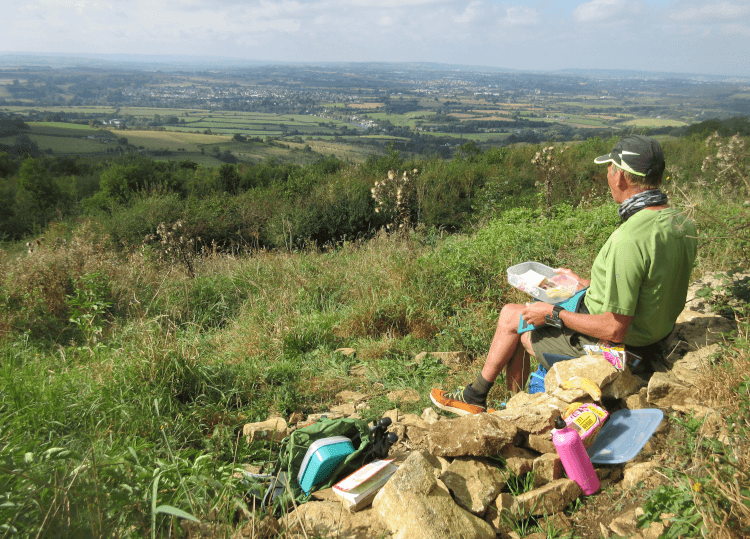
It’s less obvious that you should consider what you can eat whilst on the move. Your lunch might be a sit-down affair, but it’s important to eat small snacks on a regular basis to keep up your energy levels, and that’s much easier with foods you can eat one-handed rather than something like a yoghurt pot and spoon!
Finally, make sure you bring foods that you know you can digest easily without suffering indigestion or other problems.
I would recommend carrying a variety of foods, partly to keep things interesting, but mostly to ensure you always have something to hand that whets your appetite.
If you only carry sweet things such as chocolate and jam sandwiches, I can guarantee that at some point in the day you’ll start to crave savoury food, no matter how sweet a tooth you have! As you’re working harder than normal, your food has to provide a good combination of flavour and nutrients.
To help you plan the food you carry on the trail, I’ve put together my thoughts on the various options.
Rather than rely completely on energy bars or snacks, I like to carry what I call ‘proper food’ — food that I would eat at home. Sandwiches fall firmly into this category, with some mild amendments: when I’m walking, I prefer to carry bread rolls rather than sliced bread, since I find they’re more likely to stay intact.
As for choice of filling, I’m a vegetarian so my preference would be for egg. Yes, I know, egg sandwiches can be smelly! I guess it depends on how tolerant your walking companions are, although I find it’s not so much of an issue out in the open air.
My other choices include cheese or avocado. I avoid anything wet such as lettuce and tomatoes as these have a tendency to make your sandwiches soggy.
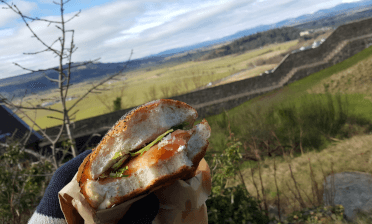
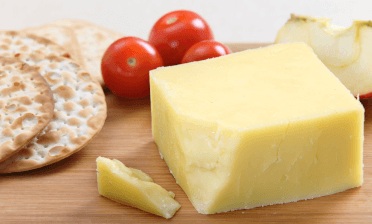
Cheese is a good option as a sandwich filling, but it goes well with crackers, too, if you don’t want the hassle of making sandwiches. A chunk of cheese is also hard enough to be durable on a walk, and it can cope with higher temperatures. Plus, when balanced with bread or crackers, cheese provides an ideal carbohydrate-protein combo.
Fruit is a great choice, because on top of being healthy, it helps to keep you hydrated. Choose fruit that can handle rolling around in your pack (for example, apples, pears or oranges) rather than soft fruit.
Bananas are also good for energy, but you need to be careful that they don’t get squashed.

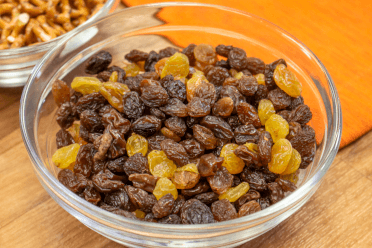
Dried fruit is more durable and has more calories per gram than fresh fruit. It’s also packed with carbohydrates, can easily be eaten when on the move and provides a quick fix when you feel a slump in energy. Dried fruit is also good with cheese. A personal favourite of mine is to pair raisins or dates with a good strong cheddar!
Chocolate bars are okay in moderate temperatures, but if it’s too hot they will melt and if it’s too cold you run the risk of breaking a tooth! My preference is for dark chocolate, but in cold weather I find this quickly loses its flavour and is instantly less enjoyable than milk chocolate.
Over the years, I’ve come to the conclusion that it’s best not to bother with chocolate bars, but sometimes one will do wonders for your mood and turn out to be just what you need to get up that hill.
Just be aware that chocolate’s instant high is inevitably followed by an energy slump which will leave you feeling lethargic.
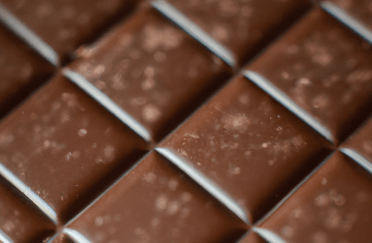
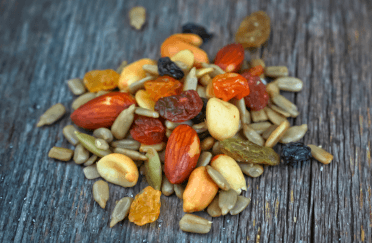
Trail mix typically combines dried fruit (raisins, coconut flakes, pineapple, banana chips, apricots), chocolate chips or a chocolate bar broken up into small pieces, granola and nuts. I find the best option is to make it yourself so you can include your personal favourites.
In many ways, trail mix is better than a simple chocolate bar since it provides more sustained energy due to the addition of fruit, granola and nuts. Trail mix is also especially good for eating on the move.
Many types of energy bars provide balanced sports nutrition, but I personally tend to avoid most of them. They are often expensive, and the taste and quality vary hugely, so you need to find one that you like. Try them at home to find a brand you like before committing to carrying any on a walk.
I find energy bars can be hard and dry so I usually only carry one as an emergency reserve or in case I’m out longer than expected. I don’t actually plan on eating it. In fact, I’ve had one in the bottom of my pack for some time, so it’s probably well past its use-buy date!
One brand that I do like is ‘9 bar’ and there are several varieties to choose from. My favourite is the fruity variety. Flapjacks can be a nice alternative to shop-bought energy bars, too, although I prefer to save myself for the café at the end of the walk and have flapjack, or cake, as a treat. I can always manage to convince myself that I deserve it after a day out in the hills!
I usually carry some boiled sweets as these give me something to suck on and keep my mouth hydrated. They can also take my mind off any difficult sections, for example going uphill!
I have friends who take other foods, including crisps, cuts of pork pie, roasted peanuts, etc. These salted foods can be what you crave, especially if it’s hot or you’re working hard, but be careful that you balance these with sufficient liquid and stay hydrated.
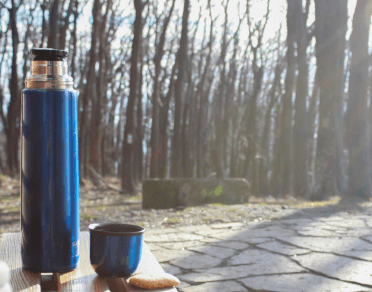
Carrying sufficient water to keep hydrated throughout your walk is a whole topic on its own, but some drinks provide a food-like boost on the trails. If I’m not constrained by weight, I often carry a flask of hot blackcurrant, or soup, which is a nourishing boost when the weather is cold.
If you’re someone who cannot survive all day without tea or coffee, then a flask is a must whatever the weather.
I carry my sandwiches and any other foods that I can in a Tupperware-type container. This keeps my food together in one place and prevents it from being squashed.
I avoid wrapping my food in layers of cling-film as this can be very tricky to remove when it’s cold and, like me, you’re susceptible to cold fingers.
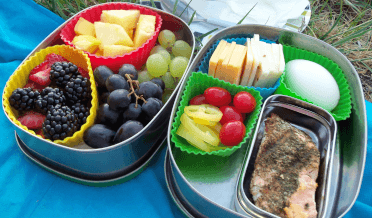
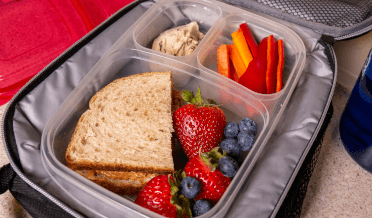
On hot days, a protective layer can be invaluable for keeping things cool. An insulated food bag takes up less room than freezer packets, and removes the risk of condensation getting your sandwiches soggy. Try to pack your temperature-sensitive foodstuffs towards the centre of your pack so they’re less impacted by the sunlight hitting your bag.
Finally, make sure you carry some snacks, e.g. trail mix, in an accessible outer pocket of your rucksack so you can reach them easily without having to stop.
Regular snacking is the best way to keep your energy up and level throughout your walk. If your bag’s pockets are all out of reach on your back, I suggest a helpful, trustworthy co-walker to do the rummaging for you!
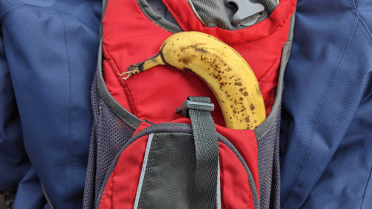
Outdoors Enthusiast
Nicky Jaquiery is a frequent contributor to the Contours Holidays blog, tapping into her vast experience out in the countryside as walker and runner to produce thoughtful and practical articles.